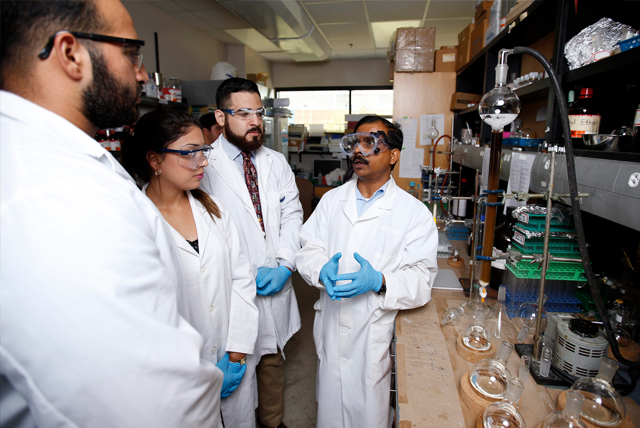Document Type
Article
Publication Date
2-17-2006
Abstract
Rotationally resolved microwave (MW) and ultraviolet (UV) spectra of jet-cooled tropolone have been obtained in S0 and S1 electronic states using Fourier-transform microwave and UV-laser/molecular-beam spectrometers. In the ground electronic state, the MW spectra of all heavy-atom isotopomers including one O18 and four C13 isotopomers were observed in natural abundance. The OD isotopomer was obtained from isotopically enriched samples. The two lowest tunneling states of each isotopomer except O18 have been assigned. The observed inversion splitting for the OD isotopomer is 1523.227(5) MHz. For the asymmetric C13 structures, the magnitudes of tunneling-rotation interactions are found to diminish with decreasing distance between the heavy atom and the tunneling proton. In the limit of closest approach, the 0+ state of O18 was well fitted to an asymmetric rotor Hamiltonian, reflecting significant changes in the tautomerization dynamics. Comparisons of the substituted atom coordinates with theoretical predictions at the MP2/aug-cc-pVTZ level of theory suggest the localized 0+ and 0− wave functions of the heavier isotopes favor the C–OH and C=O forms of tropolone, respectively. The only exception occurs for the C13-OH and C13=O structures which correlate to the 0− and 0+ states, respectively. These preferences reflect kinetic isotope effects as quantitatively verified by the calculated zero-point energy differences between members of the asymmetric atom pairs. From rotationally resolved data of the 0+←0+ and 0−←0− bands in S1, line-shape fits have yielded Lorentzian linewidths that differ by 12.2(16) MHz over the 19.88(4)cm−1 interval in S1. The fluorescence decay rates together with previously reported quantum yield data give nonradiative decay rates of 7.7(5)×108 and 8.5(5)×108s−1 for the 0+ and 0− levels of the S1 state of tropolone.
Recommended Citation
Keske, J. C., Lin, W., Pringle, W. C., Novick, S. E., Blake, T. A., & Plusquellic, D. F. (2006). High-resolution studies of tropolone in the S0 and S1 electronic states: Isotope driven dynamics in the zero-point energy levels. The Journal of Chemical Physics, 124(7), 074309. https://doi.org/10.1063/1.2165652
Publication Title
Journal of Chemical Physics
DOI
10.1063/1.2165652



Comments
© 2006 the authors. Original published version available at http://doi.org/10.1063/1.2165652